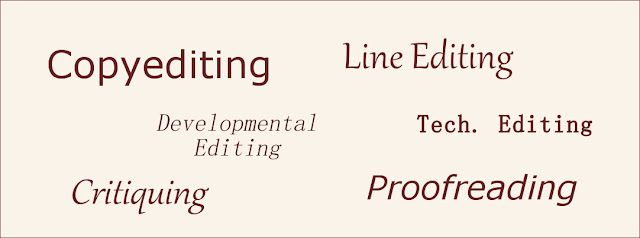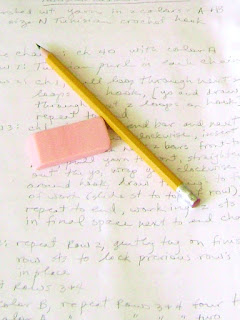 |
| Andrew Durrett, Dell Computer Co. |
September 4, 2018
Are you a business blogger? Do you have social media accounts? Recently I interviewed Andrew Durrett at Dell Computer Co. about these timely topics.
Andrew Durrett started working with social media at Dell in 2005—back when the phenomenon was just getting started. He created the first online customer outreach team for a major corporation, providing Dell with the means to get the jump on customer needs through online conversations, world-wide.
Amanda: Hi Andrew. Thank you for taking time to talk with me today.
Andrew: Thank you Amanda. I am glad to share my insights. Oh there is so much that has happened since 2005!
First let me be upfront and say I have worked for Dell for a long time so my opinions are of course tilted in my work family's favor. I cannot say enough good things about Dell and recommend it highly as a great place to work. That being said, everything I share with you are just my personal insights. I am not speaking on behalf of Dell. Also, as candid and transparent as I will try to be, please know there are some proprietary areas I cannot discuss so that Dell's interests and areas of confidentiality are protected.
What’s the Best Writing Style for Social Media Posting?
Amanda: What is the best approach for business social media posts—short and sweet, personal, topic-driven, interactive?
Andrew: It is almost always good to post in a sharing, open way with less formality. We want to give some of who we are and connect with our own who already have relationships established as well as readers beyond our customer base.
Often we can open with a few sentences relaying a personal experience which relates to what we want to talk about. We need to temper this though by who in our audience of readers will have the most interest as well as who we most want to reach.
If your key readers are already engaged and ready for specific information, cut to the chase quickly and give them what they really need. If it is something new like a product innovation or new type of service, you can share more; but be sure to use hyperlinks to more details elsewhere as well as embedded videos of experts. This lets your readers choose how much content they wish to experience.
Most posts are better with some questions out to your readers. After all, what they have to say in response is, in a way, much more relevant than most of what we may share in business posts.
Blogging: Outdated or Useful?
Amanda: Are blogs becoming a thing of the past, or are they taking a new direction?
Andrew: Blogs do not have the popularity they had in their heyday, but it is an ideal form of interaction. I hope it continues on and eventually returns to a higher level of use--the sooner the better. I do not think they will ever go away.
Picture or video based forms of media are all well and good, but a greater depth is possible in sharing where interactive written word is the unhindered focus. Twitter is too limited and lends itself to a more sporadic simple style of communication--far from ideal. Forums are good for less formal interaction and are close to ideal along with blogs but the medium and relationship is better in a blog for sharing something a bit more in depth.
Should We Be Diplomatic in Our Posts?
Amanda: How should we approach diplomacy in our online writing? Do you advise tact and avoiding incendiary topics, or "letting it rip"?
Andrew: There is something to be said for telling it like it is and speaking boldly--but only if what you want to say is going to add value, be heard and understood, incite change, and give more comfort and benefit than anger and detrimental reaction.
There have been places and times which have needed that boldness for society to move forward. Today we should still talk about places where we need to grow and solve problems more effectively, but the terrain is different now.
Most all of us experience life from group perspectives--facing special challenges and forms of oppression. We often see the flames of upset fanned until the polarities of our uniquenesses and struggles play out in visceral emotional reaction. Because of this volatile climate, we need to look more closely at what we write.
We have to ask ourselves today:
- What do my readers and the world need?
- Is my message easy for all to understand?
- Am I alienating sets of people, leaving a group out in the cold?
- Do my words trigger anger or something else negative?
- What is the outcome of my message?
- Does what I have written move us to solutions or further away?
This applies to all topics, not just social issues. When we communicate anything to our customers (or potential customers), it is always necessary to look at where the communication will lead.
How Do We Create the Best Experience?
Amanda: What advice do you have for those of us looking to create the best customer experience with our social media accounts?
Andrew: The most important thing we do with our customers online is listen. The more we hear, the better. When you post, it is important to have fun, be transparent, and be yourself. It is also important to achieve goals in communication like selling the product or service we have to offer.
It is easy though to get lost in ourselves as we talk about what we think we know; but whatever we choose to share, it is not about us. It is about those who read, those who respond.
The real beauty of social media is in what everyone shares interactively. You may learn more about your product or topic by reading all the resulting comments.
Always encourage interaction:
- Ask questions.
- Watch the resulting dialogue closely.
- Set time aside and commit to responding to your readers right there in the comments and, even then, encourage them to share more.
Once it is all said and done, take all the responses to the bank. Treat it as valuable feedback which can reshape what you think and change tomorrow’s products and services. We want to inform, share, educate, even establish ourselves as thought leaders; but the best thing for us to become is Listening Leaders.
Thanks Andrew, for sharing your knowledge and insights with us.
Amanda Evans has been editing and writing in a wide variety of fields for over thirty years. During that time, she authored numerous technical manuals and articles, as well as a children's fantasy novel. In addition, she served as editor-in-chief at a publishing house in Austin, Texas.
http://amandaevansediting.blogspot.com/








